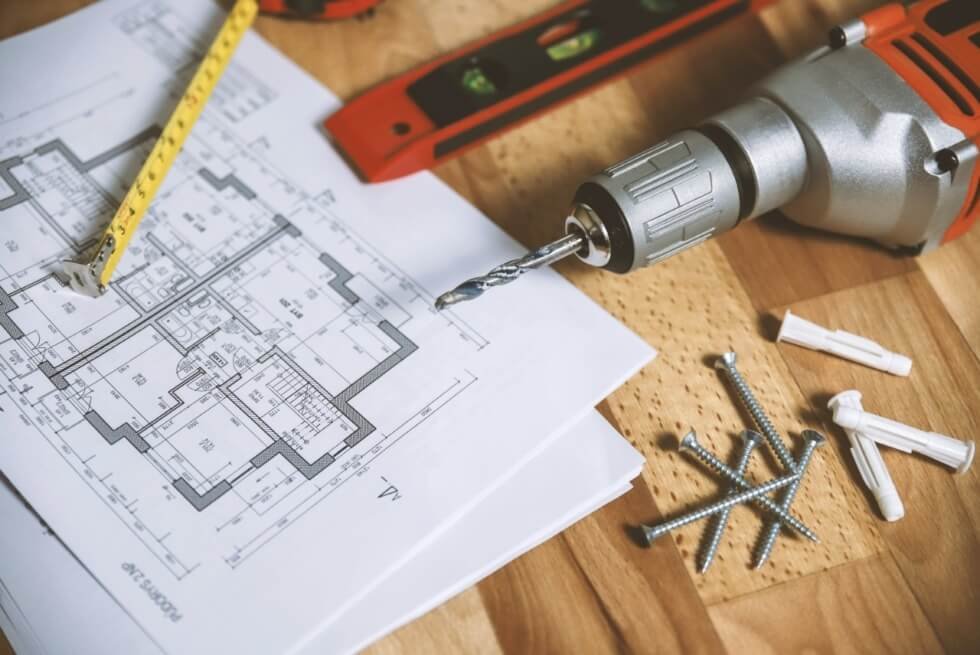Post-covid-19, more and more people are choosing to work from home, both in the United States and in other countries. Working from home during the pandemic has dramatically changed the Spaces in which people live, study and work. As a result of this change, American homeowners are keen on do-it-yourself projects, renovations and home repairs that used to cost more than $400 billion a year.
Demand For Home Improvement Rises During COVID-19
According to a survey by Nationwide in March, the majority of Americans were not able to pay their bills and finish decorating as they planned in 2021 due to material supply shortages and inflation during the pandemic. About 57% of the homeowners said high material costs are the main reason, and 43% of the homeowners said the project could not be completed on time (the epidemic caused a shortage of manpower). In the face of rising renovation costs, nearly 8 in 10 small construction or renovation companies said that materials will continue to rise in 2022, but despite this, only 5% of households planning to renovate will stop renovation because of these cost difficulties.
In addition, based on CouponBirds’ data, since the end of 2021, people’s search queries for home improvement coupons are increasing and are expected to continue surging through 2022. The first quarter of 2022 increased by 110% compared with the same period in 2021, and the second quarter is a 126% increase from the second quarter of 2021. Rising demand for home entertainment and improvement are key factors driving growth.
People Tend To Homes DIY But Face Challenges
Research from Technavio, the rapid catalysis of the epidemic in the home improvement industry has led to a room for growth in the DIY retail home improvement market, with a year-on-year growth of 4.08% in 2021. The DIY home improvement retail market share is expected to increase by $154.76 billion from 2020 to 2025, at a CAGR of 5%. North America will contribute 49% of the market.
The DIY home improvement retail market is expected to accelerate in the next five years due to the increasing emphasis on DIY home improvement projects with personalized interior design. A change in lifestyle has sparked an interest in DIY interior design. And the use of DIY products reduces the long-term work cost of outsourcing to expensive labor, which will be an important factor driving the demand for DIY home improvement products.
The adoption of AR applications in home improvement projects is another factor supporting the growth of the do-it-yourself (DIY) home improvement retail market share. Technological advancements also extend to DIY home improvement projects. For example, Kingfisher upgraded its first mobile in-store technology in 2014. The new web-enabled handheld device allows mobile checkout and provides service tools to locate products and check inventory functions. The company also launched a new mobile app that offers enhanced in-store maps and access to a live chat feature. The catalog uses AR to provide virtual previews of different DIY products, such as furniture in a room. The app supports Android and iPhone operating system (iOS) platforms, enabling users to obtain accurate measurements of furniture.
Homeowners Still Face Risks When They Renovate Their Homes
It looks like everything is going well for the home improvement market, but the recent inflation in the U.S. due to the pandemic has made it risky for many people to improve their homes. According to Hippo Insurance’s 2022 Homeowner Preparedness Report, 60% of homeowners in a recent survey were Less willing to make large purchases for their own home or family. Nearly 43% strongly (14.4%) or partially (28.4%) agree that inflation is causing them to delay planned home improvement or maintenance projects. (The poll used to generate the study was conducted from April 29 through May 1 among 1,915 U.S. adults by Ipsos on behalf of Hippo.)
While people are keen to retrofit their homes, it is vital that homeowners choose the right amount and type of insurance to effectively protect against inflation shocks. The APCIA survey found that inflation, recent supply chain issues and the impact on skilled labor and construction materials following unprecedented natural disasters over the past two years. Increased demand has recently led to a significant increase in the cost of rebuilding homes and businesses. Prices for construction materials rose 44% from December 2019 to December 2021, but only 30% of insured homeowners purchased more insurance or increased coverage to cover rising construction costs. Additionally, less than half (40%) of insured homeowners who completed renovations or remodels during the pandemic have updated their home insurance to address these changes. But about two-thirds of homeowners may not have key add-ons, such as annual inflation adjustments, expanded cost improvements and building code coverage, that better protect them in today’s challenging market conditions.
During the COVID-19 pandemic, people find themselves spending much more time at home than usual, giving them the perfect opportunity to complete some home improvement projects, and many suddenly have the funds they need to do these things. The home improvement market is booming, but right now it’s even more important to use your money wisely.







